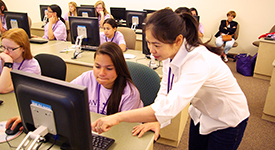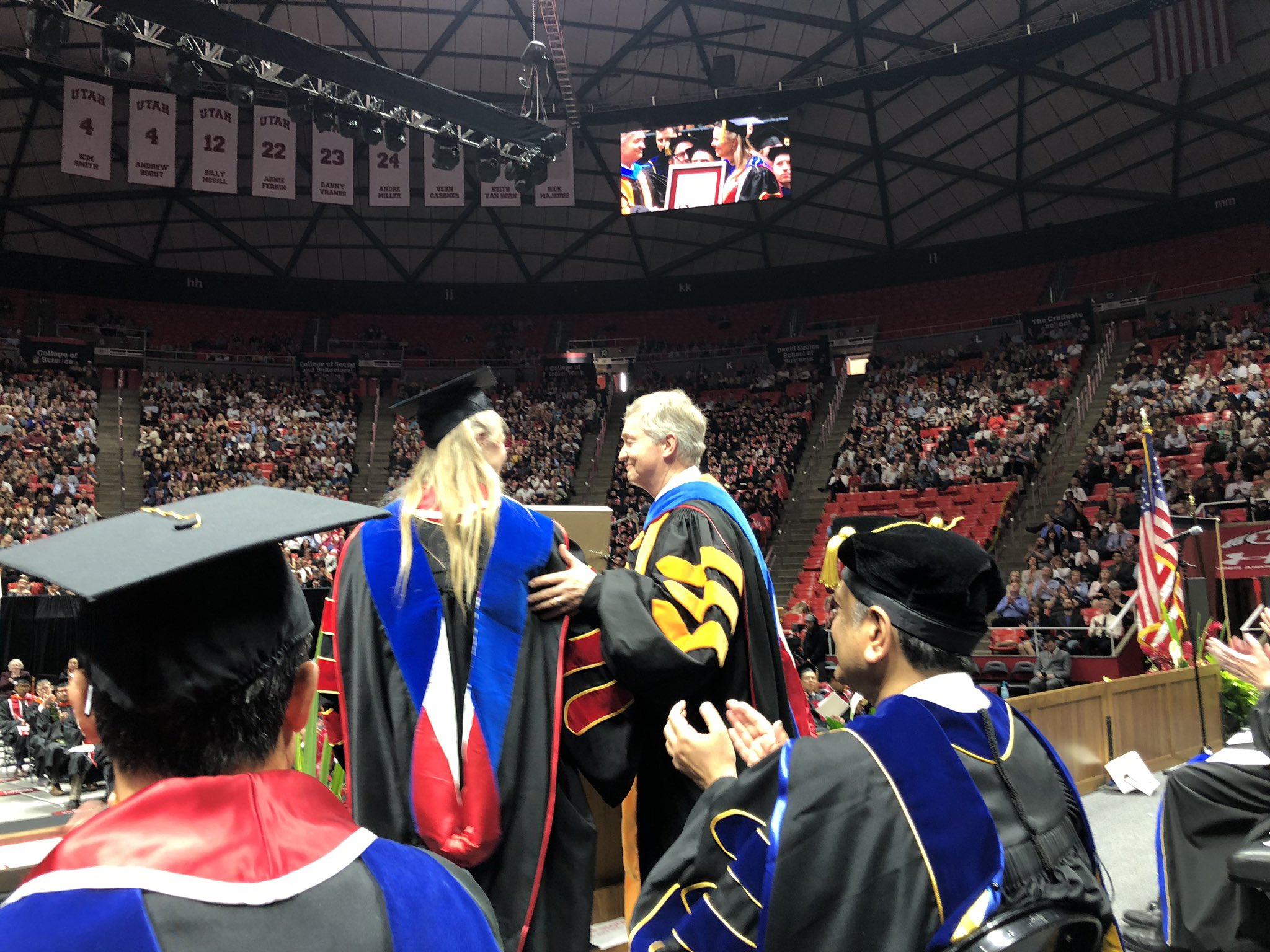Cynthia Furse’s teenage daughter was skilled in math and science and had voiced an interest in engineering. But based on a career aptitude test that showed she liked helping people, a school counselor insisted nursing was a better fit.
Why nursing and not medical school – or engineering, for that matter? And why should engineering be perceived as incompatible with wanting to help people? Over the years, those questions nagged at Furse, an electrical engineering professor and associate vice president of research at the University of Utah. So Furse did what every red-blooded scientist does. She sought answers through research.
Her conclusion: “Counselors are wonderful, ordinary, people who come with all the biases of wonderful, ordinary people.”
The Power of Bias
Biases, it turns out, are unavoidable. We’re hard-wired to categorize and stereotype. It’s how we learn. And if we don’t encounter exceptions to our biases, we have no reason to question them. They become circular, self-fulfilling prophecies, the lens through which we view the world.
It’s against that swirling tide that women aspiring to work in science, engineering and technology must swim. Test scores suggest school-age girls outperform boys in math and science. But by the time young women enter college they begin self-selecting out of these disciplines, said Furse, who, as part of an institutional effort to increase the number of engineering graduates in Utah, noticed some interesting trends. “We weren’t specifically going after women engineers. We were going after everyone. But because we asked the gender question, we started to hear from girls who said they didn’t realize engineering was a possibility.” Out of curiosity, she, educational psychologist Paul Gore, Ph.D., and a doctoral student, Tiffany Iskander, charted the self-reported career interests of ACT college entrance exam takers. They found lagging interest among women in most engineering specialties.
But one chart stood out, suggesting that for computing, at least, it wasn’t always that way - and doesn’t have to remain so.
Nurture over Nature
Career decisions are clearly influenced by the economy. In the 70’s, during the era of personal computing, the number of women contemplating computer science was booming as fast as men. There’s a bust to all boom cycles, though, and interest began to plunge in the early 80s. Then came the dot.com bubble and rise of the gaming industry, renewing career interest, but only among men. Interest among women has continued to fall.
Some point to mainstream culture as the culprit. “Early personal computers weren't much more than toys. . . . And these toys were marketed almost entirely to men and boys,” posit experts cited a story by NPR. Computers became something that boys do, a narrative enshrined in popular ‘80s-era movies, such as Weird Science and Revenge of the Nerds, NPR notes.
“Unfortunately there’s been a long time belief that the people in computer science were born to do it and have this innate talent; predominantly white males,” said social scientist Jane Margolis. “But our research shows that it’s kids who grew up in families who had computers in their homes and the money to send them to computer camps. It was preparatory privilege, not natural genius.”
Preparatory privilege does more than give some students an edge over their peers. It’s a condition for enrollment at many colleges, explained Margolis, who, in the 1990s, helped lead an experiment to diversify enrollment at Carnegie Mellon University’s top-rated computing program. They began by interviewing students to understand the source of their passion for computing. Based on their findings they set about re-branding the program under the banner, “Computing with a purpose.” The idea was to connect computing with a social good, which resonates more with women, instead of just hacking for hacking’s sake. What’s more, Carnegie changed its admissions policy, placing less emphasis on computing experience and robotics clubs and, instead, opening the door to anyone strong in math and science.
Prior to the experiment, just 7 percent of the school’s entering freshmen were women. Five years later, by 2000, the percentage had increased five-fold to 40 percent where it remains today. “We found that when you had a critical mass of women, that really changed the culture. Women were no longer feeling isolated and could support each other and bring their perspectives to what they felt was important to the field,” Margolis said. “The whole culture shifted from it being a fraternity to being a co-ed space.”
Similar recruiting projects at other colleges and universities have also met with success, but they’ve been mostly ad-hoc. Nothing has taken root and spread, which, perhaps, makes the case for intervening earlier in the educational pipeline.
Margolis’ research squares with what Furse found upon interviewing high school guidance counselors to determine under what circumstances they would steer a young woman or man into engineering. All things being equal – math and science test scores and grades – the counselors were more likely to recommend male students for careers in engineering, even when the men expressed in personality surveys a desire to help people. And if a young woman expressed a desire to help people, that was a deal breaker, and counselors advised them into other careers such as medical and education. That was important, because most women engineers describe their motivation for going into engineering as a desire to help people and make their lives better.
Furse’s daughter, Katie, triumphed over self-doubt and frowning career counselors. She just finished her MBA and is a few months away from completing a master’s of engineering degree. Having someone like Furse as a role model probably didn’t hurt. “It has to start with parents,” believes Furse. “Often the person that young women engineers point to as being most influential in their career decisions is their Dad.”
Of course, parents don’t live in a vacuum. They’re behavior is equally shaped by cultural biases. But as Margolis’ experiment and Furse’s research show, biases aren’t living things, forcing their will upon the world. They’re societal constructs, a set of internalized beliefs and assumptions – and they’re subject to change.
Let’s hope they do because one thing is clear: The tech industry is expected to yield 1.2 million jobs in computing alone by 2022. Yet U.S. universities are producing only 39 percent of the graduates needed to fill them, according to the National Center for Women & Information Technology. That’s a problem that can’t be fixed by training men alone.
______________________________________________________
De-bugging the gender gap: Could a billboard solve America’s labor shortage?
“Have you tried to buy a pair of men’s Sorel snow boots lately?” asked Cynthia Furse, Ph.D., an electrical engineering professor and the University of Utah’s associate vice president of research. “Apparently, they’ve become a major fashion statement in New York, part of a new style called ‘Lumber Sexual,” because someone wore them on [the movie] Hunger Games, and now, no one can keep them in stock.”
We do culture change all the time, and some of the most effective change is a result of advertising. Consider the anti-tobacco campaigns of the mid-60’s, which led to a 59 percent plunge in smoking rates. So Furse has an idea: A billboard dedicated to advertising high-tech jobs, and featuring young women.
“We need young women to see themselves in these roles,” said Furse. “Insofar as advertising influences society by normalizing certain values and behaviors, why not advertise?”
Furse isn’t suggesting that advertising alone could solve persistent gender inequities in science and technology. But could it be a missing part of the solution? And could solving the gender gap alleviate America’s high-skill labor shortage?
Anyone who watched the 2015 Super Bowl likely saw the launch of the “Like a Girl,” ad campaign, which provocatively reveals how women as young girls are free from preconceived notions about throwing or running “like a girl,” but then begin to internalize those ideas in their teens. A similarly eye-opening campaign by Verizon focusing on “techie girl power” hasn’t enjoyed the same level of buzz on social media, which may highlight the emphasis we place on excelling in sports versus academics.
Could the very existence of the ad, though, signal that we’ve reached some sort of cultural tipping point? Companies have started to release hiring numbers and some universities are making headway with diversity in enrollment. It’s not uncommon to read newspaper stories about the gender gap in science and technology, suggesting awareness of the problem has reached the mainstream.
So, perhaps, a billboard isn’t such a bad idea. It’s worked before, notes Furse, recalling a spate of parents, who a few years back, phoned her for advice on preparing their children for careers in computing.
She welcomed the calls, to be sure. But, she wondered, why the sudden interest? The answer, she discovered while stuck in traffic on the Interstate, was a billboard advertising computer engineering job openings at a local company. “This billboard was saying loud and clear, ‘Utah needs more computer engineers,’” Furse said. “And it was saying it to everybody.”
Kirsten Stewart is a senior writer for University of Utah Health Sciences


